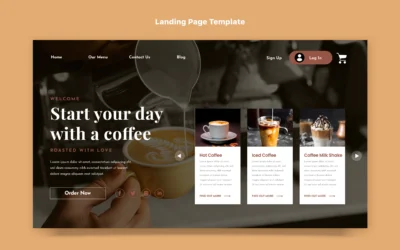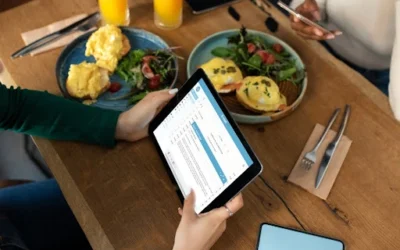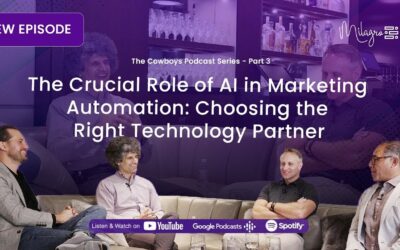Do restaurants really have thin margins?
As a restaurant owner or manager, you may have heard the common misconception that restaurants have thin margins. However, this is not necessarily true, in fact, many restaurants have healthy profit margins, especially when they are able to effectively control their food costs, labor, and markups on menu items.
So where is this misconception of thin margins coming from? Let’s review the restaurant as a business and go through the numbers.
First, let’s discuss the margins. Think of another business where a fountain drink is purchased for $0.25 cents and sold for $3. That is a 1,200% markup.
A bottle of crown or titos for $30 dollars and sells for $300, which is a 900% ROI.
A bottle of wine for $10 dollars and sell a 5oz glass of it for $14 dollars.
The least profitable dish sells for $15 bucks, costs you $4.50, still a 230% markup on your lowest profitable item on the menu.
The cherry on top, your servers’ wages are also paid by your customers through tips. So again, where is the low-margin outcry coming from?
The short answer is that restaurants make a ton of money, but they also burn a ton of money, which reduces their profit margins.
So let’s discuss the misconception and how to fix it.
A typical restaurant has no idea who its customers are, and they do nothing to cater to individual customers. They open a restaurant, advertise through some channels, gain some customers, and never follow up with those customers to maximize the return on advertising dollars spent. In all other industries, this is completely absurd. Specifically, within software companies, there is a vast amount of resources invested in learning everything from customer acquisition cost, to lifetime value, to churn rates, customer satisfaction, and other similar metrics to gauge the health of the business. Now in a restaurant, you will be lucky if the manager stops by the table and asks; “How was your food?” This is a rhetorical question. as if anyone will confront the manager in a face-to-face confrontation and tell the truth.
Now a typical restaurant realizes that they’ve saturated their existing resources and moves to paid advertising to try and spend their way out of the situation, mind you, the same situation that they put themselves in. As you may expect, the results are more catastrophic because now they are spending money without tracking or measuring any return on investment. They may have some initial success, but without a proper follow-up on the customer side, they unintentionally minimize their return on investment. The restaurant owner/operator is its own worst enemy.
Now comes the desperation phase, they start discounting and giving away free food in order to attract customers and just barely stay afloat to pay the bills. As we all know, the best way to attract your best customers is to discount and devalue your brand; no, that is the worst way. To state the obvious; coupons will almost always bring in the least profitable customers, those looking for bargains.
Let me give you an example; for the past six years, I have strived to reduce my pure sugar intake, which means avoiding anything with unnecessary sugar, including Bundt cakes. So the only way that you can entice me to buy one, is to give me a deep discount which conveniently Nothing Bundt cake does every month or so through a direct flyer with an aggressive buy one get one free offer. Spend six dollars and get another six dollars for free. So now they cut their profit margin by half simply by bringing in a customer who would otherwise never spend any more money with their brand as they have to. This a classic example of why coupons only attract the least profitable customers. On top of that it is costing them at least one dollar to create, print & mail the flyer, and get it in my hands. So do coupons work? Yes, they do! but there is a place to utilize coupons, however, with the right metrics in place.
By now the restaurant owner is in complete panic mode, they are losing money hand over fist, couponing is making matters worse so they trying email marketing, i.e. electronics couponing. Although more efficient, they only manage to shave off $.50 cents versus a dollar to reach out to the customer compared to direct mail.
After some ups and downs, a great salesperson sells them the grand idea of implementing a loyalty app in order to learn customer behavior and turn things around. Wallah, a magical solution to their exact problem. Exactly as if God sent The salesman to solve their specific problem, a messiah, a miracle sent straight from God himself! Milagro! (by the way, Milagro means Miracle)
So now they continue investing in promoting a loyalty app in order to learn customer behavior and use that information to turn things around. After a good 12 months of time wasted, they have a maximum of 15% of their customers for which they are tracking some of the customer behavior. Now the problem is they don’t have a way to monetize the data, they have some generic data, but what do I do with it? Those who have the means to monetize the data, seem to continue down the same path as digital coupons. Send out Kids eat free every Tuesday of the month to 1.2m customers, 75% of whom do not even have kids! Brilliant!
Almost every restaurant owner has at least once a week complained that my restaurant has thin margins. But is that really the case or are they trying to run away from reality and hide behind this mask, this misconception that restaurants have thin margins…
By the way, to be clear, we aren’t underestimating the challenge of running a restaurant! It is in fact a very difficult business to operate, the sheer fact that you have to make the food the exact same way every single time is a massive challenge by itself.
Let’s continue on. With any business, profit margin will always be a problem up to about $700 to 800,000 /year in sales. The reason that this figure is important, is that it will help pay for all of the fixed costs, think rent, utilities, software subscription cost, that loyalty app, etc.
After fixed costs, you have variable costs. Variable costs will be things that will change depending on usage, consumption, longer hours and etc. Think of these as labor and food cost in your restaurant.
So of course, for the first 700 to 800 thousand in revenue, every business will have thin margins. But it just so happens that average restaurant sales according to National Restaurant Association is $659 thousand a year. So the problem is not that restaurants have thin margins, they simply do not have enough sales.
Okay so we have proven the fact that the restaurants have great profit margins, why are many of them struggling? So what’s the solution?
The solution is to increase sales. Let’s take an example to make this crystal clear on how a small 15% increase in sales can double your net margins! For sake of simplicity, we will use an example of a restaurant doing a million dollars a year in total sales. Let’s assume this restaurant has super thin margins, 10%. So one million in revenue, gives them a $100 thousand dollars in NET profit. This is how much the owner takes home free and clear after all expenses are paid.
Now let’s increase revenues by $150 thousand dollars in a year, that’s an additional $2,884 a week, $412 a day. Let’s recalculate our net margins now. For the additional $150k in sales, our rent didn’t increase, our utility bills didn’t increase, and our labor costs didn’t increase. In fact, the only thing that did increase, is our food cost, the variable cost we discussed earlier.
Now, in restaurants, the typical food cost is 28%. When it goes over 30%, all hell breaks loose, but let’s assume food cost is 33% for a moment. $150k in sales, 33% food cost, that means $50 thousand is gone and now we are left with $100 thousand dollars in net profit from our $150 thousand in additional sales. We had 10% profit from the first million in sales, that was $100k, add the $100k in profit from our $150k increase in sales and now we doubled our net margins from $100k to a staggering $200 thousand dollars or 17.4% net margin.
Again, is the underlying problem thin margins or is it lack of sales?
The next logical question is how do we increase sales by $150k a year? Well that is done through many channels
- Training the employees to upsell better
- More efficient use of marketing funds
- But most importantly, Implementing a Customer Data Platform, a CDP so you know who your customers are. You know exactly how much they spend, how often they visit, what is their lifetime value, what are their favorite items and etc.
So let’s see how knowing your customer can actually increase your sales.
Imagine that a customer makes a reservation online or joins the waitlist upon arriving at the restaurant, the hostess immediately sees that this customer has VIP status and is allergic to peanuts. You have a one-hour wait to get a table but the hostess immediately responds, Mr. Parker we do have a one-hour wait however considering you are a VIP customer give me about five minutes and I will bump you on top of the list and have you seated in the next few minutes. By the way, I see that you have a peanut allergy, don’t worry I will let the chef know
After Richard Parker gets a VIP treatment, leaves the restaurant and within 20 minutes he gets a quick text message that says how was your experience? If he had a 5-star review, we immediately redirect him to leave a 5-star review on Google, yelp, and social media, otherwise, we will redirect his feedback to the store manager. So this is one way of leveraging your existing happy customers to increase your 5-star reviews which will directly impact your sales. No one will go to a 3.5-star restaurant when there are plenty of 4.5-star rated restaurants around.
Now imagine being able to have Richard Parker’s profile with all of his favorite items that he typically orders, how many times has he ordered them, what is his satisfaction scores with your restaurant, his average spend, his lifetime value, every location he has visited and every marketing message he has engaged with.
Let’s push the boundaries even further, imagine creating a kids eat free campaign that goes out every Tuesday of the month, to the Dallas-Fort Worth market, and to every customer who has kids. Compare this to the old way of mass marketing and sending 1.2 million emails to all of your customers announcing kids eat free on Tuesdays. This personalized marketing approach clearly increases your response rates but also reduces your cost of marketing.
Let’s push the boundaries even further again, imagine if you knew every single customer who responded to that email marketing, push notification, and text marketing and you knew exactly how much money they spent because of this offer. Considering the 80/20 rule, 20% of those customers will drive 80% of your sales. Now we can focus on the most profitable customers, if you gave away a $10 offer and Jack spent $18 and Nick spent $56, well it doesn’t make sense to spend your marketing dollars to entice Jack to come in, funnel those funds towards more people like Nick.
These systems do exist today and larger brands with enough budget and manpower already have a competitive advantage over the smaller guys. The big players, the likes of Uber, DoorDash, Amazon, Facebook, Google have made billions of dollars utilizing these systems. They clearly understand the value of data, but more importantly, they understand the value of transactional data and have become extremely efficient at monetizing that information. It is time for your restaurant to do the same. Stop hiding behind the notion that restaurants just simply have thin margins, make the change and take control of your future.
Imagine trying to compete with an AI engine that never sleeps, never takes a break, never calls in sick, and will never ask for a raise. How would you compete with a restaurant that utilizes such systems?
We, at Milagro, are giving the smaller restaurant chains a lifeline to aggressively and effectively compete, even surpassing the big brands. Again, Stop hiding behind the misconception that restaurants have thin margins and take control of your business.
By the way, customer data is as useless as not having the data. Transactional data is just as useless if it’s not actionable. Monetization of the data requires transactional data but more specifically, it requires actionable transactional data.
In the next episode, we will discuss Customer Data Platforms and how they help increase sales and profits in restaurants. We hope you enjoyed this conversation, stay tuned and subscribe to be notified when we release future episodes.




